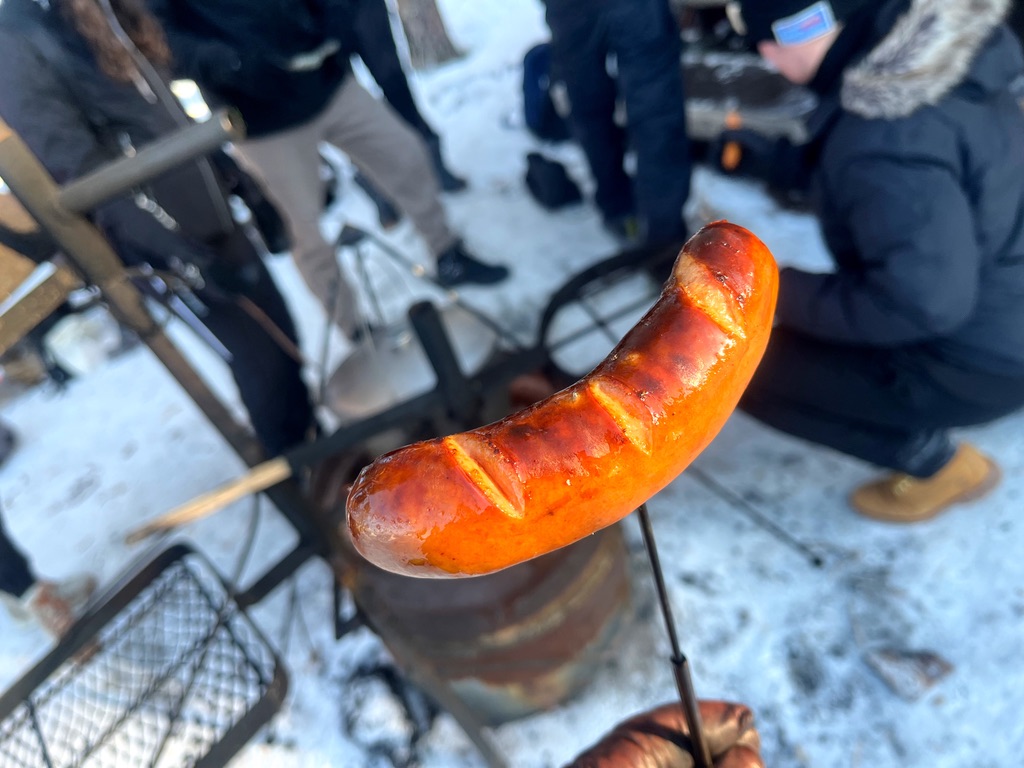Finnish culinary and drinks
Some well-known memes exist about Nordic kitchens being strange or not tasty. That is not true, indeed. So, here we will tell you about the Finnish kitchen and some well-known recipes. But we also share something you might never have heard about, like the traditional dishes of some regions.
Try to find this food in cafes, shops, or restaurants and cook something yourself! Enjoy.

Graavilohi – Graved salmon
This type of salmon is usually raw, but cold-smoked salmon is pretty close to that one. Both are usually salted with added herbs like dill, rosemary, and lemon juice. There are no specific rules on which tastes you might add; it is up to your choice.
Want to get your fish but don’t know where to start? Here is the answer.
Photo: Valio

Hernekeitto – Pea soup
Photo: Soppa365
Hirvi – Moose

Joulukinkku – Christmas ham
Photo: Snellman

Joulutorttu – Christmas pastry
Seasonal pastry is usually baked at Christmas time.
Photo: A-lehdet Oy

Kahvi – Coffee
Photo: Lehmus

Kalakukko – Fish pie
Kalakukko is a traditional Finnish dish from the region of Savonia made from fish (e.g., perch, vendace, loach, smelt, or salmon) baked inside a loaf of bread. Kalakukko is especially popular in Kuopio, the capital city of the Northern Savonia region. Kuopio is home to many kalakukko bakeries. The city also hosts an annual kalakukko baking contest.
Photo: Valio

Kantarelli – golden chanterelle
Photo: Puutarha.net

Karjalanpaisti – Karelian stew
Photo: anna.fi

Karjalanpiirakka – Karelian pie
Photo: Valio

Kaurarieska –
Photo: Kreivin keittiö

Korvapuusti – Cinnamon Roll
Photo: Valio

Kotikalja – Small or Table beer
Photo: Lähiruokaa maalta

Laatikko
There are different types of that dish; the most popular are makaronilaatikko, maksalaatikko, porkkanalaatikkolaatikko, and kinkkulaatikko.
Photo: K-Ruoka

Laskiaspulla – Semla
Photo: Viimeistä Murua Myöten

Leipäjuusto – Bread cheese
Photo: Yle

Lihapiirakka – Meat pie
Photo: MTV Uutiset

Liquorice and Salmiakki
Photo: Fazer

Lohikeitto – Salmon chowder
Photo: Kodin Kuvalehti

Makkara – Sausages
We made a separate article about the deep world of sausages in Finland. Enjoy your reading here.
Photo: ESN Lappeenranta, Art M.

Mignon eggs
The Mignon chocolate egg is an Easter confectionery made by the Fazer company. Its distinctive feature is a filling of almond hazelnut nougat inside a real eggshell. Enduringly popular as part of Finnish Easter celebrations, with about two million eggs sold yearly, Mignon eggs are handmade at the Fazer factory in Vantaa.
Photo: MTV Uutiset

Muikku – Vendace
Want to get your fish but don’t know where to start? Here is the answer.
Photo: Hätälä

Mustikkapiirakka – Blueberry pie
Photo: Annin Uunissa

Mämmi
Photo: Ruokawiki

Porkkanakakku – Carrot pie
Photo: Arla

Poronkäristys –
Photo: Valio

Puolukkarönttöset
Photo: Martat.fi

Ruisleipä – Rye bread
Photo: Kotiliesi

Runebergintorttu – Runeberg torte
Photo: Pullahiiri
Sima

Suklaa – Chocolate
Photo: Fazer
